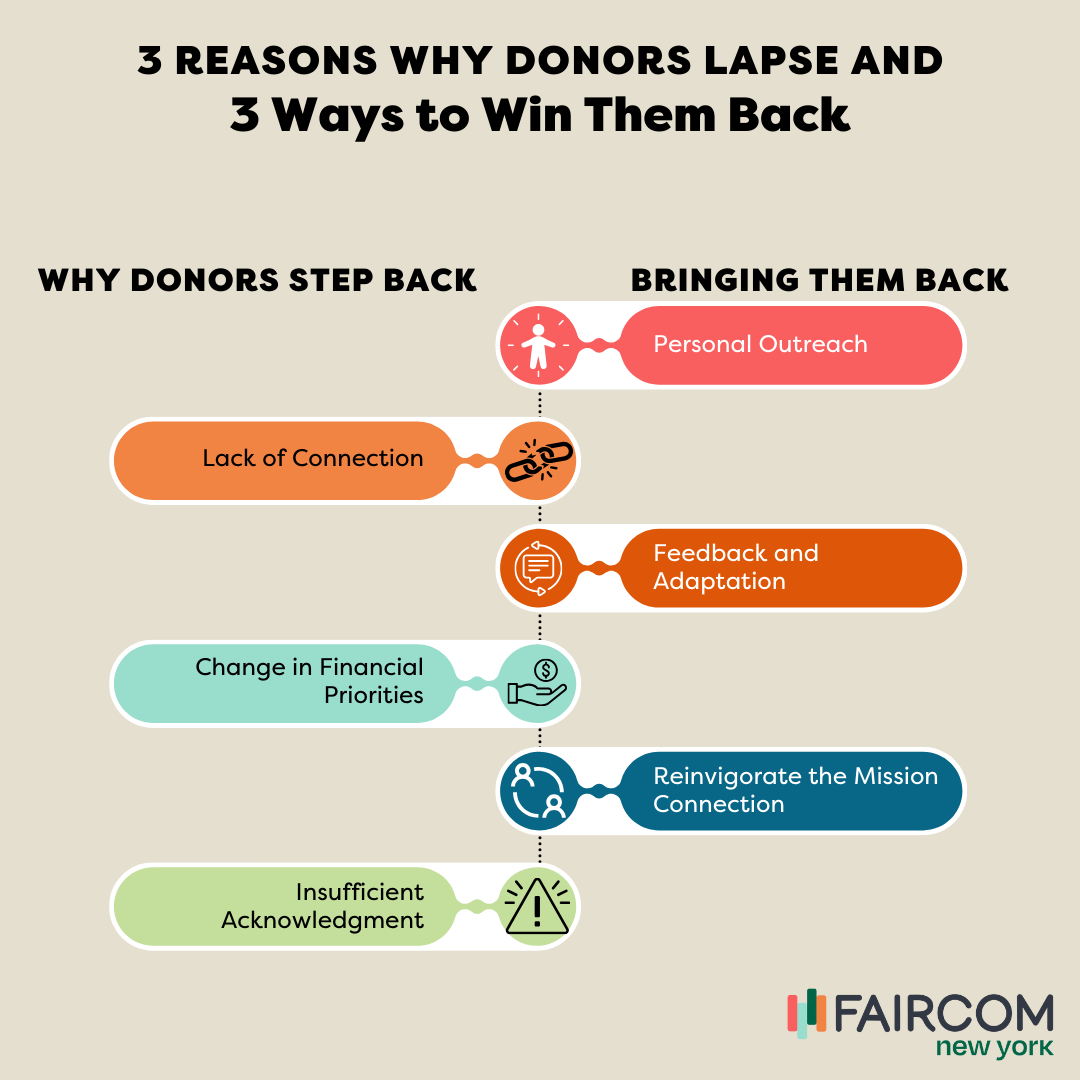In Part 1 of this post, we looked at how donor data can reveal fascinating patterns and help us spot potential long-term supporters. Now, let’s dig into something you’ve probably wondered about: why do donors drift away, and how can I bring them back into our community?
Why Donors Step Back: Three Common Reasons
You know that hollow feeling when a donor stops giving? It happens to every nonprofit, but understanding why can help prevent it. Here are the main reasons we see:
They’ve Lost That Connected Feeling
Remember, donors give because they want to make a difference. When they can’t see or feel the impact they’re making, their enthusiasm naturally fades. That’s why sharing real stories and updates isn’t just nice – it’s essential for keeping their passion alive.
Life (and Money) Happens
Sometimes, it’s as simple as this—life throws curveballs. Economic changes can force even the most dedicated donors to tighten their belts. When a donor steps back, it doesn’t always mean they’ve lost interest – they might just need to press pause while they sort out their finances.
They Don’t Feel Appreciated
It’s no secret that nobody likes feeling taken for granted. When donors don’t feel valued, they might start looking elsewhere to make their impact. A strong donor relationship, like any relationship, needs to go both ways.
Bringing Them Back: What Actually Works
Reach Out (As You Would to a Friend)
Whatever you do, skip the formal corporate speak. Instead, try a friendly phone call, a personal email, or to make a real impact – an old-school handwritten note. Show them you care about them as people, not just as donors. A simple, genuine “How are you?” can work wonders.
Listen and Learn
Want to know why someone stepped away? Ask them! Then — and this is crucial – actually use their feedback to make changes. When you do, it shows not only that you are just listening but that you’re willing to grow and improve.
Light Their Fire – Again
Think back to what made your donors fall in love with your org and your cause in the first place. Then remind them! Share the stories of lives changed, projects completed, and dreams realized – especially ones they helped make possible. Use examples that move hearts and minds and that show them that they’re more than mere donors; they’re change-makers!

Keep Track of What Works
In Part 1, we geeked out a little (in a good way!) about metrics. Those numbers tell an important story: how well you’re keeping first-year donors, how many stick around for years, and how successful you are at bringing back those who’ve drifted away. Watch those upgrade and downgrade patterns, too – they’re like temperature checks for your donor relationships.
Pay attention to how often people give throughout the year, and keep an eye on your monthly donors – they’re often your biggest champions. All these pieces help you understand your donor family better and contain invaluable info to help you strengthen your connection to them.
Here’s the Thing…
Don’t let a donor’s departure get you down, but do pay attention. Every donor who steps away is really an opportunity to learn, grow, and build an even stronger relationship. When you approach each person with genuine care and strategic smarts, you create the kind of community where people want to stick around – and, often, get more involved.
Think of it this way: you’re not just trying to keep donors – you’re building a family of supporters who are as passionate about your mission as you are. When you make that your focus and get it right, amazing things happen.



